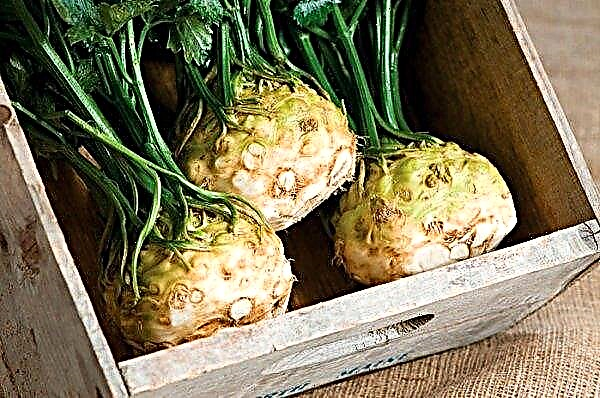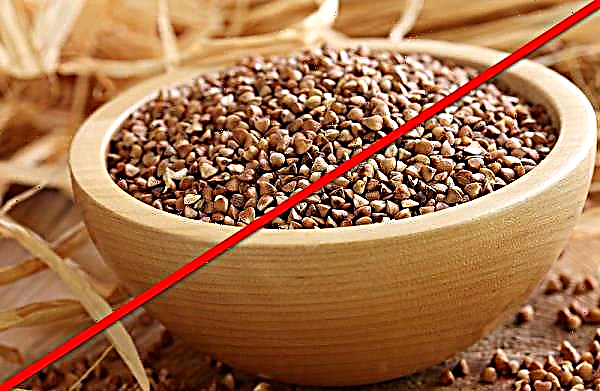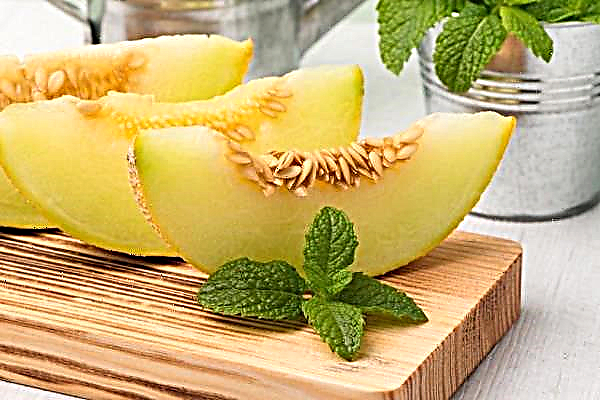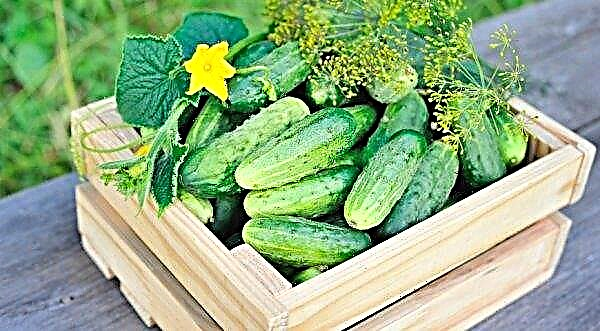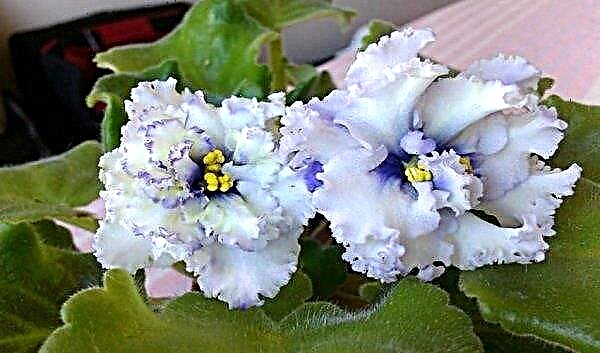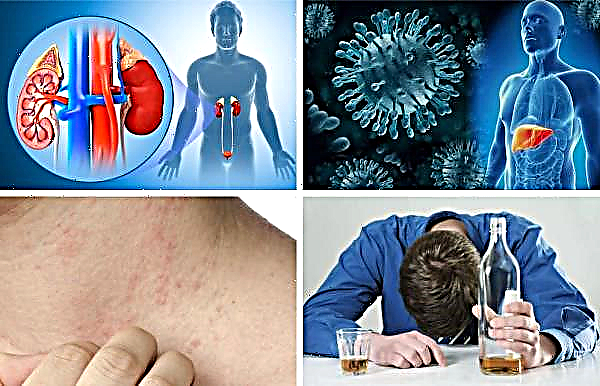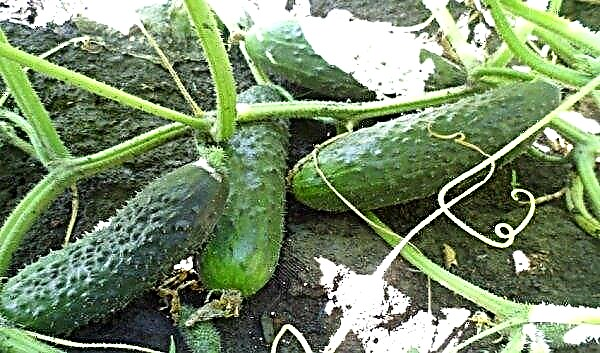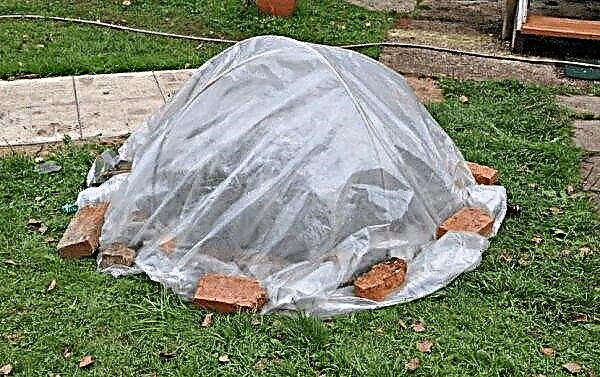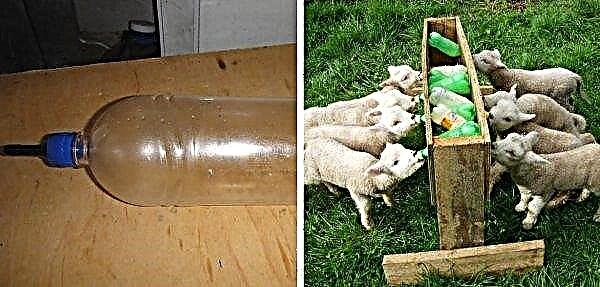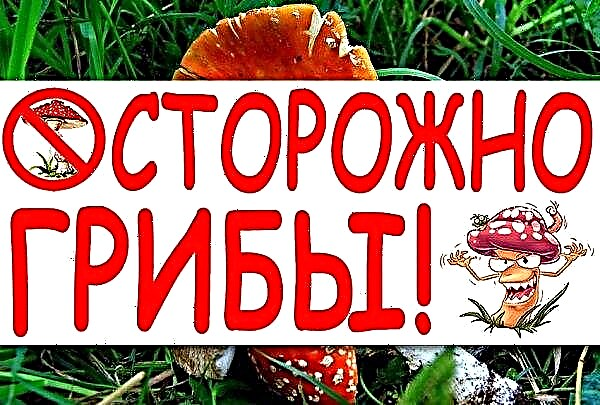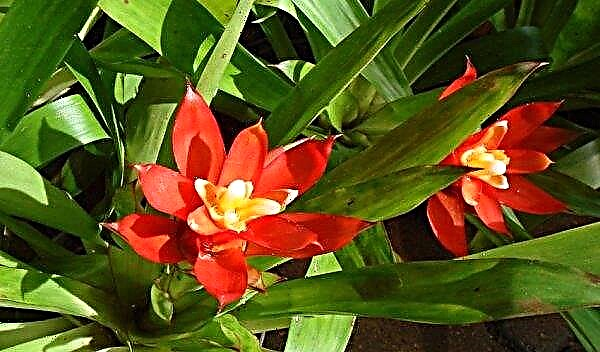Corn, proudly bearing the title “Queen of the Fields”, is one of the most popular and beloved cultivated plants in vegetable growing, which, in addition to its unsurpassed taste qualities, is also characterized by resistance to various adverse environmental conditions.
However, even with the cultivation of this sustainable crop, one may encounter such troubles as diseases and pests, which can cause significant damage to the crop and worsen the sowing quality of seeds. This article offers to get acquainted with the most dangerous pests and diseases of corn, as well as protective measures and ways to combat them.
Major diseases
The main enemies of corn include bladder smut, fusarium and several other diseases that can destroy the entire crop as soon as possible if appropriate measures are not taken in time. Ailments can attack the plant at any phase of the growing season, and the reasons for this can be poor quality care, poor planting material and untimely extermination of pests.
Corn disease is no less harmful to humans, and therefore it is so important to diagnose the disease in time, after studying its symptoms, and begin treatment.
Did you know? The cereal crop known to us as «corn», the rest of the world is called «maize». This is due to the Latin etymology of the plant name. — Zea mais.
Diplodiosis
Diplodiosis, or dry rot of corn - An extremely dangerous infectious disease that can ruin a crop in a matter of days. The spores of the fungus - the causative agent of the disease - feel great at a temperature of +20 degrees, but for the full development they need a higher temperature - not less than +27 ... + 29 degrees.
Most often, outbreaks of diplodiosis were recorded in the United States and Georgia, but in our country this is considered a quarantine disease, that is, highly contagious and difficult. The disease is able to attack corn at any age, however, young, immature plants that have just entered the phase of milk ripeness are most susceptible to infection.
Diplodiosis affects equally all the aerial parts of the plant - it most often appears on the cobs and stems, but the roots are also often infected. A characteristic and most obvious sign of infection is the appearance of brown spots with a large number of black dots on the stem, which rapidly softens and breaks down. In the center of the spots, one can observe numerous bright points - pycnids, which, developing, acquire a dark shade.
Leaves are affected by the same principle. The cobs, as a rule, are closer to the base, covered with white, cotton-like plaque - pathogen mycelium. During a severe defeat, they dry out, wrinkle and break easily, because they do not have time to ripen, and the seeds turn brown and crumble without effort.
Healthy kernels can also be affected in such ears, since a weakened plant ceases to resist the pathogen, and it easily seeps into them. In the case of using these seeds as planting material, young plants will die before they germinate, especially in slightly warmed soils.Favorable conditions for the development of the disease are, first of all, arid weather with a stably high air temperature or prolonged rainfall and high humidity during the cob ripening phase. Even with a weak defeat, the treatment of corn from diplodiosis will be extremely difficult and slow, and in the chronic stage of the disease this process is completely impossible, and farmers have no choice but to destroy the infected plantations. Moreover, broken stems of plants significantly complicate the mechanical cleaning of the site.
Video: maize diplodiosis
Helminthosporiasis leaf
A fairly common disease that is not tied to a specific region or climate. Helminthosporiasis is especially dangerous and characteristic for corn leaves, but ears and even plant roots are no less susceptible to infection. Conidia, that is, spores of the fungus, actively develop in conditions of high humidity, and if this indicator is less than 75%, their formation will not occur. But even despite this, pathogen spores are incredibly resistant and can tolerate absolutely any temperature, which greatly complicates the process of their destruction.
The most widespread helminthosporious leaf spot is in the Baltic countries and some regions of Ukraine, in particular, Transcarpathian. Adult plants, the incubation period of which lasts about two weeks, are especially affected by the disease. The harmfulness of the disease is extremely high, and without the timely adoption of the necessary measures, the crop shortage at best will be 60%.
The appearance of helminthosporiosis can be easily detected by elongated brown spots with black edges. Initially, they are covered with a barely noticeable white coating, but very quickly they turn brown, acquiring a dark olive shade, and increase, capturing the entire leaf plate. As a rule, at first the lower tier of the leaves is affected, then the disease rapidly captures the upper one. If the conditions are sufficiently favorable for the development of conidia, the spots merge, and the affected dried leaves die off.
During wet weather, one can observe the dark brown sporulation of the fungus on the lower part of the leaves. On underground and aboveground internodes, helminthosporiasis manifests itself in the form of dark green 25-30-centimeter spots of a very different shape, but the core of the stem remains. On the cob, the disease can be distinguished by a dense black coating at the base and characteristic grooves among the grains.
Infection can occur through preserved plant debris in the soil in which pathogen mycelium hibernates and infected seeds. The most suitable depth for preserving mycelium in the soil is up to 15 cm, at a depth of more than 20 cm, as a rule, it dies. In spring, new conidial sporulation forms on it, which are actively distributed to corn crops. Temperature from +20 degrees and relative humidity favor the development of conidia, and the probability of infection is almost one hundred percent.
Cladosporiosis
Cladosporiosis, or olive mold, - One of the most dangerous diseases of cereal crops, characteristic of the defeat of corn cobs at any period of the growing season. The plant is affected by the combined effects of several types of saprophytes, developing independently and having their own external signs, which the researchers combined into one disease.
The chronic form of cladosporiosis can cause great losses in case of excessive hypothermia of the corn during frosts and untimely cleaning of the site from organic waste, in which there is a high probability of the presence of each type of pathogen.
Possessing a high level of resistance and adaptability to external factors, they are able to develop on dead cells of other plants and the soil surface, making their way to weakened corn roots and proceeding to parasitization. The greatest defeat was recorded on late-ripening specimens that accumulated a large amount of moisture by the onset of frost.
The symptomatology of cladosporiosis is simple.: dark cinnamon spots of various shapes and sizes are formed on the cob, starting from the base and gradually capturing all the grains. In addition to blackening, one can also observe numerous defects on grains - various grooves, rotten depressions, white deposits of mushrooms sporulation. This plaque formed is so similar to smut disputes that the disease is often confused with a dusty smut, but there is nothing in common between these ailments.
Rotting of the grains often continues during their storage, while the top of the ear itself often remains an untouched disease. In addition to the cobs, cladosporiosis also affects old stems and leaves, strewn with a gray cotton-like film. Mushrooms of pathogens are usually concentrated on the upper part of the plant tissue.A prerequisite for the occurrence of cladosporiosis can also be an invasion of aphids, in the secretions of which conidia develop especially intensively. The harmfulness of the disease is also felt by a person for whom poisoned grains can be toxic. Crop losses resulting from an attack of cladosporiosis range from 30 to 50%.
Important! In addition to plant debris, grains are also an important source of infection.
Bubble Smut
This is the most harmful and dangerous enemy of all corn farmers. The disease is widespread everywhere and can lead to both complete and partial destruction of the crop, but there are also cases of its shortage due to damage to the plant’s aboveground organs.
The disease can attack corn at any vegetative stage and, depending on the variety's resistance, can manifest itself in different ways. It is known that on refractory varieties and hybrids the manifestations are either extremely insignificant or completely absent.
For bladder smut, the formation of pathologies on the leaves and ears in the form of swellings and white nodules, reaching unequal values, is characteristic. On leaves, they are usually elongated, on the cobs, these vesicular formations can be of very different shapes. Manifesting themselves on individual ovaries, they significantly inhibit the development of cobs, expanding until their formation finally stops.
On the stem, the disease is expressed by huge spherical swellings scattered randomly. Its defeat is considered a chronic form of the disease that cannot be treated, since at this stage the plant dies at lightning speed. The reproductive organs of corn, which are also susceptible to illness, in most cases permanently die.
The evolution of spores is simple.: forming at the growth points, they gradually germinate and burst, scattering throughout the sowing area and becoming a source of infection. They attack mainly the young growing organs of plants, therefore, for late hybrids, the defeat of the bladder head is not characteristic. Despite the rapid growth and maturation, pathogen spores can be stored in dry form for more than 7 years, however, with increased humidity, their germination is quickly lost.
The development and risk of infection with a cystic smut directly depends on the state of the soil - even slight fluctuations in moisture, both up and down, can activate the development of the pathogen. In addition to natural factors, infected cobs and plant debris from the previous generation of the corn crop can also be sources of infection, but infection rarely occurs through seeds.
Percentage yield losses are characterized by the number and size of nodules on the cob:
- in the case of particularly large formations, the decrease in yield can reach 70%;
- with an average size of 30%;
- with very slight swelling - not more than 15%.
Eating infected corn plants is fraught with poisoning for both humans and animals, as they become toxic during the formation of spores.
Fly Smut
Symptoms of the smut very similar to the bubbly smut of corn, and therefore in appearance these two ailments are difficult to distinguish. The disease is most widespread in the southern regions, where environmental conditions are the best possible for the development of a pathogen. A severe defeat can destroy up to 40% of the crop.
The causative agent of infection is a fungus, the spores of which gather in small glomeruli and, ripening, decay. Unlike vesiculate, the fly smut affects maize mainly in the early phase of development, so most plants catch the infection while still in the ground. In some cases, damage can occur before the stage of the appearance of eight to nine leaves.
Spores develop most actively at a temperature of +25 ... + 30 degrees and high humidity, and invade mainly late varieties and hybrids. Soil is an ideal wintering environment for pathogen spores, in which they can be stored for up to 10 years and, if the corn is planted regularly in such an infected substrate, they accumulate, after which they are transferred to other areas with the wind.
Penetrating through the roots, the flying smut affects all the aerial parts of the plant, but inflorescences and ears are most at risk. The first signs of an ailment can be detected in the flowering phase, when infected inflorescences are completely covered with a black sticky coating - sporulation of the fungus.
Sick weakened plants do not bear fruit, significantly lagging behind in growth and development, and instead of an ear they form a huge oblong nodule. At first, the swelling is covered with a thin, barely noticeable gray crust, which bursts after a while, thereby spreading the pathogen spores. As a result, the infected ear is completely sprayed, leaving nothing behind.
The disease is also fatal for the stem - with a severe defeat, its final part swells, the internodes decrease, and as a result the inflorescence takes the form of a leaf rosette. At the same time, the generative cells of the plant are also affected.
Infection occurs through seed with stored pathogen spores, less commonly through organic waste. Long wet weather and root damage by pests also provoke the disease. The consequences of the fly bunt attack are very destructive: a significant shortage of crops, thinned crops, slowed growth and development of corn, which forms underdeveloped ears.
Wilt
Wilt, or bacteriosis - an extremely harmful vascular disease, the bacterial pathogen of which is characteristic only for corn. Arriving to us from the USA, the disease quickly received quarantine status and, given the lack of treatment, was recognized as one of the most harmful.
To date, hybrid forms absolutely resistant to bacterial wilt do not exist, since under favorable conditions for the development of pathogen colonies, they can damage plants to varying degrees. The causative agent of infection is anaerobic bacillus, not exceeding 5 mm, characterized by survivability and parasitic on all organs of corn, making it susceptible to other dangerous ailments.The principle of their action is to penetrate through various injuries on the plant and clog the vessels, thereby limiting their access to moisture and food. After this, the bacteria actively begin to secrete toxins, which gradually lead to the drying out of the corn.
All organs affected: cobs, leaves, stems, panicles, including the root system. Wilt is especially dangerous for very young seedlings, but the organs of adult plants are affected by the disease selectively.
A characteristic sign of the disease is the yellow mucous discharge on the leaves and stems, which are especially noticeable on cross sections. They are preceded by dark, oblong spots, which subsequently turn yellow and rapidly increase in size, capturing the entire sheet plate.
With severe damage, the plants dry up and die even under conditions of increased soil moisture.Those who manage to survive shrink or grow underdeveloped, most often they are not able to bear fruit or form spoils affected by mucus. Infected seeds look shriveled and stunted. There are frequent cases of damage to only a few leaves of corn, while the rest of its organs continue to develop normally.Did you know? Corn grains can be not only yellow, which we are so accustomed to. In fact, there are more than a thousand varieties and hybrids of corn, and the color of their grains can be very different — pink, purple, blue and even colorful.
If bacteriosis is detected in a small area, all crops are urgently mowed, the soil is disinfected, and organic waste is burned. Such radical measures are due to the lack of methods for treating a disease that destroys more than 50% of the crop. Sources of infection are usually infected seeds and plant debris in which anaerobes can survive up to 5 years. During the growing season of corn, they easily move with the help of rain and wind to other fields, infecting the crops growing there.
Video: wilt (bacterial wilting) of corn
Fusarium
Fusarium - A dangerous fungal disease that is ubiquitous. All crops are susceptible to disease, but on corn the disease manifests itself in the form of deformation of the ears, which is why it is also called dry rot of the ears of corn. Over the past few years, outbreaks have been especially common in regions with high air humidity and prolonged rainfall. Total losses in crop yields reach about 70%.
The causative agent of the disease is a fungus that lives in the soil and is most adapted to the saprotrophic method of development. Its ability to persist for a long time in plant residues is due to its incredible vitality, because the pathogen can develop at both high and low temperatures and even with a complete lack of moisture.
Wet weather is considered to be the most favorable factor for infection, as well as storage of cobs at a humidity index of 20%. Symptoms of the disease appear already at the stage of milk-wax ripeness of the plant, which is covered with a pinkish coating. Heavily affected grains darken, lose strength and break easily. But even healthy-looking grains can turn out to be infected and provoke re-infection when sowing the next generation of corn.
Fusarium is characterized by several stages, the less dangerous of which can stop at only a few grains, and the most harmful one covers the entire cob and even the leafy wrapper. The plaque covering the cobs contains fungal mycelia, which, with the humidity necessary for their development, begin to grow rapidly. However, it is so often invisible that the crop is harvested without any suspicion, and the disease is detected already in the process of threshing, when the grains begin to crumble intensely. A particular danger of fusarium is the toxicity of spores of its fungus, which are extremely harmful to animals and humans. Infection with an illness can occur through seeds that were not promptly removed from the site, and organic waste. The infection gets into the ear through ulcers and other injuries left by the pests. There are frequent cases of fusarium on already diseased plants or weakened as a result of an attack of other diseases. Infected seeds lose their sowing qualities and viability.
A particular danger of fusarium is the toxicity of spores of its fungus, which are extremely harmful to animals and humans. Infection with an illness can occur through seeds that were not promptly removed from the site, and organic waste. The infection gets into the ear through ulcers and other injuries left by the pests. There are frequent cases of fusarium on already diseased plants or weakened as a result of an attack of other diseases. Infected seeds lose their sowing qualities and viability.
Stem rot
Stem rot of corn is a disease common throughout. The regions most susceptible to attack of the disease are characterized by a temperate or humid climate, and the pathogen reaches its peak during prolonged rainfall, during which conditions of increased humidity are formed. In regions with an excessively dry climate or prolonged drought, rot almost never occurs.
The causative agent of infection is a marsupial fungus from the genus Fusarium. It is most dangerous for plants entering the phase of milk ripeness, but in isolated cases, damage to corn by rot by the end of the growing season was also noted. The primary signs of the disease are not difficult to determine - the entire lower part of the stem and internodes are completely covered with small dark spots. Further development of the pathogen leads to softening and rotting of the stem (including from the inside), and the plant dies.
When the stem core is fractured, one can observe a change in its color to dirty pink and the formation on the infected tissues of a cluster of rounded black dots - peritheum, the size of which does not exceed 2-3 mm. The disease manifests itself especially clearly in wet weather, when a pinkish plaque is formed on all the aerial organs of the plant - sporulation of the fungus.
In especially hot weather, the leaves of plants attacked by decay lose their turgor, change their color to gray and become dull, after which they dry out. The root system also collapses, turning into a black rotten mass, which makes it easy to extract a diseased plant from the ground. The cobs are formed of dwarf, dried, with numerous damage to the grains.
In the process of harvesting, the infection easily penetrates the plant remains of corn, where it subsequently hibernates, and, after spring, they activate and infect as many plants as possible. In summer, rot is especially harmful, and not only the stems are at risk, but also leaves and ears, which almost completely disturb the entire vegetation process.
You can detect stem rot at its initial stage by paying attention to the condition of the cob - in case of damage, it will look feeble and fragile, and various putrefied grooves and grooves are not rare among grains. Seeds lose their sowing qualities and viability. Disputes are still underway about their toxicity and danger to livestock - some researchers argue that infected seeds are extremely dangerous and can lead to liver damage in animals, while others are prone to believe that they are absolutely harmless and can be fed to livestock without fear. One way or another, as a result of infection, the seeds completely lose their germination capacity, and crop losses as a result of stem rot attack can be 30%.
Disputes are still underway about their toxicity and danger to livestock - some researchers argue that infected seeds are extremely dangerous and can lead to liver damage in animals, while others are prone to believe that they are absolutely harmless and can be fed to livestock without fear. One way or another, as a result of infection, the seeds completely lose their germination capacity, and crop losses as a result of stem rot attack can be 30%.
Basic measures for the protection and control of corn diseases
Measures for the protection and control of the diseases of this culture include both agrotechnical methods that guarantee high-quality prevention and the treatment of corn with chemicals that reduce the risk of reinfestation. In order to prevent the occurrence of one of the aforementioned ailments, it is necessary to ensure proper care of the corn and regularly inspect the plants for signs of infection, and at all phases of its maturation.
There can be many reasons, as well as sources of infection, but all of them are associated with errors such as the planting of poor-quality or already infected seed, the lack of warning of crop pests and the removal of plant residues from the site.
The main preventive measures for the prevention of corn diseases are as follows:- selection and planting of resistant varieties and hybrids of corn to most fungal diseases;
- removal of diseased plants from the site at the first sign of damage. The best option would be to burn or bury them to a depth of not less than 70 cm at a considerable distance from the plantation;
- compliance with crop rotation rules, that is, planting a crop to a previous place no earlier than 3-4 years later;
- preliminary seed treatment with fungicides;
- regular tillage and careful removal of plant debris from the planted area;
- compliance with optimal sowing dates corresponding to the variety and planting density;
- the systematic application of fertilizers in order to increase the immunity and resistance of plants;
- timely conduct of irrigation procedures and compliance with storage rules for seeds and grains.

The most effective means of eliminating diseases include the following:
- Vispar - based on the action of a substance such as carboxin, the drug is intended to combat the bubbly and flying smut, as well as various fungi that provoke moldy seeds;
- "Granite" - The principle of its action is also based on carboxin. Actively fights against ailments such as root and stem rot;
- Maxim Quatro - one of the most popular means, which includes a huge number of elements. Effectively and quickly eliminates all sorts of rot and blistering smut;
- Stamina - a drug with pyraclostrobin as the leading component. It fights with Fusarium and brown leaf spot;
- Vitavax - the composition and principle of action of the drug is very similar to "Vispar", but is aimed at eliminating diseases such as cladosporiosis, fusarium and root rot;
- "Fever"- It is effectively used against bladder smut and mold of seed material.
Important! Prerequisites for the occurrence of diseases can also be pests, which significantly weaken the plant, making it vulnerable to the spread of infection.
Corn Pests and Controls
In addition to diseases, various insect pests are also no less harmful to corn, which can cause large losses when attacking plantations. The fight against them is carried out by the use of both folk remedies and chemical preparations. All of them equally contribute to the elimination of parasites and reliable protection against their repeated invasion.
Root aphid
Aphid is considered one of the most common and harmful insects that are not tied to a specific region or climate, and therefore few farmers may be surprised at its appearance on corn plantations. The rapid development of colonies, reaching about 16 per season, occurs in conditions of high humidity and air temperature. The most active in August. Pest infection can occur either by accident with the help of a gust of wind, or as a result of poor quality care of the crop and nearby plants.
The formation of aphid colonies on corn most often occurs on leaf blades and panicles. The most pronounced sign of the appearance of the pest is a sharp discoloration of the leaves and their wilting. In the case of a strong population of insects, the growth and development of plants is significantly inhibited, yield losses can reach 20–25%.
On the affected ears, you can find different sizes of blackening and other results of the vital activity of the parasites. The pest larvae destroy the root system of the plant, weakening it until it dies. Among other things, aphids are also carriers of many other diseases of cereal crops, including contributing to the occurrence of cladosporiosis.
Chemical treatment of crops is carried out using such means as Actellik, Sayfos, Pirimore, Karbofos and Fosfamide. The most popular remedy among gardeners is Metafos, the consumption of which is 770 ml per 1 ha of corn. But the use of these funds will be justified only if more than 50% of the site is infected, with a lower rate, it is not recommended to treat the plant with chemicals.There are also popular recipes for controlling insects - this is soap and soap-soda solutions, as well as a mixture of ash and soap. This combination affects adults and scares away young literally in a matter of hours after the first use. Procedures using these funds are performed for two weeks with an interval of 2-3 days. In case of incomplete destruction of the pest, the treatment should be repeated.
Stem moth
The stem moth is found everywhere in all regions where cereals grow. The pest is a butterfly with a 25-30 mm wingspan of gray or brown color, which can be folded so as to completely cover its body. Males are much smaller than females and a darker shade. An adult at night can cover distances of up to 3-4 kilometers.
Of the variety of cereals, the pest prefers corn, representing the maximum harmfulness for it - it makes holes in it, devouring leaf plates, panicles and ears. Caterpillars move freely between plants, actively forming colonies.
One of the most obvious signs of colonizing a crop with a stalk moth is brown flour poured from damaged stems, due to which the stems quickly break down in places burnt by insects. Particularly affected by the invasion of the larvae are young cobs, which, as a result of the defeat, will no longer be able to ripen and form grain, as a result of which the yield is significantly reduced. Severe pest damage can destroy more than 80% of the crop.
The stem moth is often also a carrier of a number of diseases, for example, fusarium and stem rot, which significantly increases the risk of such large-scale losses. Dry and hot weather is fatal for insects. Wintering of the caterpillars takes place inside the stem, where they previously crawled at the end of the growing season. With the advent of spring, they pupate, releasing a cobweb and forming a cocoon.
Chemical pest control measures involve the use of various insecticides, in particular, the drug Coragen. The principle of its action is to damage the digestive system of the insect, removing calcium from it, which is involved in muscle contraction, resulting in paralysis. Thus, the larvae stop eating, weaken and die. Alternative methods for destroying the stem moth are no less effective - soap and ash-soap solutions have established themselves as excellent tools for getting rid of the pest.
Important! The difficulty in getting rid of crops from most pests lies in their quick getting used to any chemical compositions of preparations, therefore, for greater efficiency in the process of treating corn, they must be alternated.
Swedish fly
The Swedish fly causes farmers a lot of trouble, because its harmfulness can destroy up to 50% of corn crops, and its excellent adaptability and prevalence of species make it almost not killable, because after elimination from the site of one species, another appears immediately. The only factor that can affect the decrease in the number of pests is temperature fluctuations, however, even a prolonged absence of food does not affect their condition and activity in any way.
Insects, reaching a length of 2-3 mm, are characterized by the absence of paws, instead of which spikes act as a means of transportation. Over its entire life cycle, the pest changes color several times, ranging from white to lemon yellow. In addition, the salivary glands of fly larvae are able to secrete a special toxic enzyme that damages plant tissue.
Damage left by insects on corn can be of the following nature:
- the foliage darkens sharply, and the stem thickens, thus trying to restore the affected internal tissues;
- cobs grow dwarf, stopping in growth and development, since the pest, eating milk grains, does not allow them to ripen;
- numerous holes in the lower part of the stem and leaves, left as a result of the life of insects.
Wireworm
One of the greatest dangers for sowing crops is represented by wireworms, which produce corn as one of their main victims. The decrease in yield can be different: in some cases, it can be insignificant losses - up to 30%, and sometimes the mass settlement of the pest can destroy up to 99% of the crops.
Insects reach their greatest numbers during periods of prolonged rainfall and regular watering of the fields. In the case of dry weather, the wireworm does much more damage, trying to compensate for the lack of moisture and biting into the ears of corn. The period of its development can reach from 4 to 9 years, and severity is determined at the rate of 20–25 units per 1 m² of sown area.
Populating crops, insects begin to actively feed on seeds and young sprouts of corn. However, unlike other pests, outbreaks of wireworm activity are directly dependent on soil composition. Preferring heavy, clay and moist soils, in especially dry weather, he migrates inside it, trying to extract as much moisture as possible. The signs by which it is possible to determine the presence of a parasite are the presence of holes made by it on leaf plates and, as a result, the wilting of young plants.
It is extremely difficult to deal with the pest by chemical means, because for the larvae living underground, preparations have not yet been invented that can preserve the culture without damage. Some funds have a limited duration, for example, Bazudin and Nemabakt. This is a powerful biological weapon against the pest, but the effect of them will last no more than 2 months, but they will save the corn from chemical poisoning, as they are introduced into the soil along with planting.
Preventative measures
In addition to chemical pest control agents, prevention will serve as a much better and more reliable protection against them. It lies in simple agricultural practices, the basis of which is, first of all, proper care of plants.
The start of prophylaxis should already be at the stage of acquisition of seed and pumped after the harvest:
- selection of seeds of resistant and precocious hybrids and varieties;
- fertilizer application when planting seedlings in order to increase their immunity;
- biological method - attracting insects that feed on pests to the planting area;
- timely removal of diseased or affected areas of corn;
- standardized use of insecticides;
- deep and regular plowing of the soil;
- thorough cleaning of plant residues with their subsequent destruction away from the field.




